Zhiqiang Chen
REF-VLM: Triplet-Based Referring Paradigm for Unified Visual Decoding
Mar 10, 2025Abstract:Multimodal Large Language Models (MLLMs) demonstrate robust zero-shot capabilities across diverse vision-language tasks after training on mega-scale datasets. However, dense prediction tasks, such as semantic segmentation and keypoint detection, pose significant challenges for MLLMs when represented solely as text outputs. Simultaneously, current MLLMs utilizing latent embeddings for visual task decoding generally demonstrate limited adaptability to both multi-task learning and multi-granularity scenarios. In this work, we present REF-VLM, an end-to-end framework for unified training of various visual decoding tasks. To address complex visual decoding scenarios, we introduce the Triplet-Based Referring Paradigm (TRP), which explicitly decouples three critical dimensions in visual decoding tasks through a triplet structure: concepts, decoding types, and targets. TRP employs symbolic delimiters to enforce structured representation learning, enhancing the parsability and interpretability of model outputs. Additionally, we construct Visual-Task Instruction Following Dataset (VTInstruct), a large-scale multi-task dataset containing over 100 million multimodal dialogue samples across 25 task types. Beyond text inputs and outputs, VT-Instruct incorporates various visual prompts such as point, box, scribble, and mask, and generates outputs composed of text and visual units like box, keypoint, depth and mask. The combination of different visual prompts and visual units generates a wide variety of task types, expanding the applicability of REF-VLM significantly. Both qualitative and quantitative experiments demonstrate that our REF-VLM outperforms other MLLMs across a variety of standard benchmarks. The code, dataset, and demo available at https://github.com/MacavityT/REF-VLM.
An Ordinary Differential Equation Sampler with Stochastic Start for Diffusion Bridge Models
Dec 28, 2024Abstract:Diffusion bridge models have demonstrated promising performance in conditional image generation tasks, such as image restoration and translation, by initializing the generative process from corrupted images instead of pure Gaussian noise. However, existing diffusion bridge models often rely on Stochastic Differential Equation (SDE) samplers, which result in slower inference speed compared to diffusion models that employ high-order Ordinary Differential Equation (ODE) solvers for acceleration. To mitigate this gap, we propose a high-order ODE sampler with a stochastic start for diffusion bridge models. To overcome the singular behavior of the probability flow ODE (PF-ODE) at the beginning of the reverse process, a posterior sampling approach was introduced at the first reverse step. The sampling was designed to ensure a smooth transition from corrupted images to the generative trajectory while reducing discretization errors. Following this stochastic start, Heun's second-order solver is applied to solve the PF-ODE, achieving high perceptual quality with significantly reduced neural function evaluations (NFEs). Our method is fully compatible with pretrained diffusion bridge models and requires no additional training. Extensive experiments on image restoration and translation tasks, including super-resolution, JPEG restoration, Edges-to-Handbags, and DIODE-Outdoor, demonstrated that our sampler outperforms state-of-the-art methods in both visual quality and Frechet Inception Distance (FID).
CaRtGS: Computational Alignment for Real-Time Gaussian Splatting SLAM
Oct 02, 2024Abstract:Simultaneous Localization and Mapping (SLAM) is pivotal in robotics, with photorealistic scene reconstruction emerging as a key challenge. To address this, we introduce Computational Alignment for Real-Time Gaussian Splatting SLAM (CaRtGS), a novel method enhancing the efficiency and quality of photorealistic scene reconstruction in real-time environments. Leveraging 3D Gaussian Splatting (3DGS), CaRtGS achieves superior rendering quality and processing speed, which is crucial for scene photorealistic reconstruction. Our approach tackles computational misalignment in Gaussian Splatting SLAM (GS-SLAM) through an adaptive strategy that optimizes training, addresses long-tail optimization, and refines densification. Experiments on Replica and TUM-RGBD datasets demonstrate CaRtGS's effectiveness in achieving high-fidelity rendering with fewer Gaussian primitives. This work propels SLAM towards real-time, photorealistic dense rendering, significantly advancing photorealistic scene representation. For the benefit of the research community, we release the code on our project website: https://dapengfeng.github.io/cartgs.
Learning from Pattern Completion: Self-supervised Controllable Generation
Sep 27, 2024
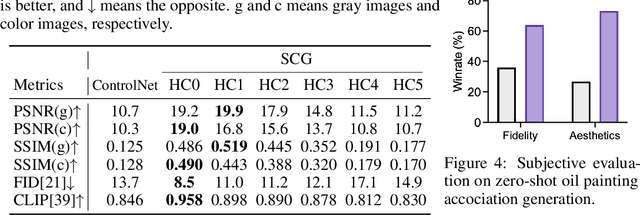
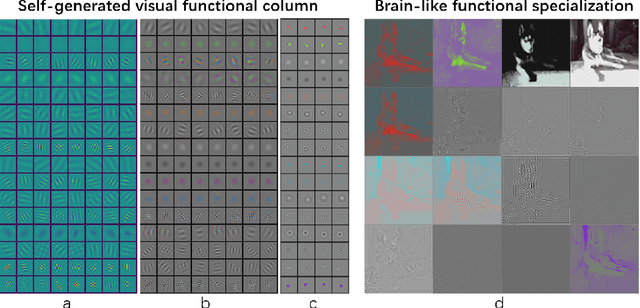

Abstract:The human brain exhibits a strong ability to spontaneously associate different visual attributes of the same or similar visual scene, such as associating sketches and graffiti with real-world visual objects, usually without supervising information. In contrast, in the field of artificial intelligence, controllable generation methods like ControlNet heavily rely on annotated training datasets such as depth maps, semantic segmentation maps, and poses, which limits the method's scalability. Inspired by the neural mechanisms that may contribute to the brain's associative power, specifically the cortical modularization and hippocampal pattern completion, here we propose a self-supervised controllable generation (SCG) framework. Firstly, we introduce an equivariant constraint to promote inter-module independence and intra-module correlation in a modular autoencoder network, thereby achieving functional specialization. Subsequently, based on these specialized modules, we employ a self-supervised pattern completion approach for controllable generation training. Experimental results demonstrate that the proposed modular autoencoder effectively achieves functional specialization, including the modular processing of color, brightness, and edge detection, and exhibits brain-like features including orientation selectivity, color antagonism, and center-surround receptive fields. Through self-supervised training, associative generation capabilities spontaneously emerge in SCG, demonstrating excellent generalization ability to various tasks such as associative generation on painting, sketches, and ancient graffiti. Compared to the previous representative method ControlNet, our proposed approach not only demonstrates superior robustness in more challenging high-noise scenarios but also possesses more promising scalability potential due to its self-supervised manner.
Heterogeneous LiDAR Dataset for Benchmarking Robust Localization in Diverse Degenerate Scenarios
Sep 10, 2024Abstract:The ability to estimate pose and generate maps using 3D LiDAR significantly enhances robotic system autonomy. However, existing open-source datasets lack representation of geometrically degenerate environments, limiting the development and benchmarking of robust LiDAR SLAM algorithms. To address this gap, we introduce GEODE, a comprehensive multi-LiDAR, multi-scenario dataset specifically designed to include real-world geometrically degenerate environments. GEODE comprises 64 trajectories spanning over 64 kilometers across seven diverse settings with varying degrees of degeneracy. The data was meticulously collected to promote the development of versatile algorithms by incorporating various LiDAR sensors, stereo cameras, IMUs, and diverse motion conditions. We evaluate state-of-the-art SLAM approaches using the GEODE dataset to highlight current limitations in LiDAR SLAM techniques. This extensive dataset will be publicly available at https://geode.github.io, supporting further advancements in LiDAR-based SLAM.
RELEAD: Resilient Localization with Enhanced LiDAR Odometry in Adverse Environments
Mar 15, 2024Abstract:LiDAR-based localization is valuable for applications like mining surveys and underground facility maintenance. However, existing methods can struggle when dealing with uninformative geometric structures in challenging scenarios. This paper presents RELEAD, a LiDAR-centric solution designed to address scan-matching degradation. Our method enables degeneracy-free point cloud registration by solving constrained ESIKF updates in the front end and incorporates multisensor constraints, even when dealing with outlier measurements, through graph optimization based on Graduated Non-Convexity (GNC). Additionally, we propose a robust Incremental Fixed Lag Smoother (rIFL) for efficient GNC-based optimization. RELEAD has undergone extensive evaluation in degenerate scenarios and has outperformed existing state-of-the-art LiDAR-Inertial odometry and LiDAR-Visual-Inertial odometry methods.
Implicit Image-to-Image Schrodinger Bridge for CT Super-Resolution and Denoising
Mar 10, 2024Abstract:Conditional diffusion models have gained recognition for their effectiveness in image restoration tasks, yet their iterative denoising process, starting from Gaussian noise, often leads to slow inference speeds. As a promising alternative, the Image-to-Image Schr\"odinger Bridge (I2SB) initializes the generative process from corrupted images and integrates training techniques from conditional diffusion models. In this study, we extended the I2SB method by introducing the Implicit Image-to-Image Schrodinger Bridge (I3SB), transitioning its generative process to a non-Markovian process by incorporating corrupted images in each generative step. This enhancement empowers I3SB to generate images with better texture restoration using a small number of generative steps. The proposed method was validated on CT super-resolution and denoising tasks and outperformed existing methods, including the conditional denoising diffusion probabilistic model (cDDPM) and I2SB, in both visual quality and quantitative metrics. These findings underscore the potential of I3SB in improving medical image restoration by providing fast and accurate generative modeling.
CoLRIO: LiDAR-Ranging-Inertial Centralized State Estimation for Robotic Swarms
Feb 23, 2024Abstract:Collaborative state estimation using different heterogeneous sensors is a fundamental prerequisite for robotic swarms operating in GPS-denied environments, posing a significant research challenge. In this paper, we introduce a centralized system to facilitate collaborative LiDAR-ranging-inertial state estimation, enabling robotic swarms to operate without the need for anchor deployment. The system efficiently distributes computationally intensive tasks to a central server, thereby reducing the computational burden on individual robots for local odometry calculations. The server back-end establishes a global reference by leveraging shared data and refining joint pose graph optimization through place recognition, global optimization techniques, and removal of outlier data to ensure precise and robust collaborative state estimation. Extensive evaluations of our system, utilizing both publicly available datasets and our custom datasets, demonstrate significant enhancements in the accuracy of collaborative SLAM estimates. Moreover, our system exhibits remarkable proficiency in large-scale missions, seamlessly enabling ten robots to collaborate effectively in performing SLAM tasks. In order to contribute to the research community, we will make our code open-source and accessible at \url{https://github.com/PengYu-team/Co-LRIO}.
S3E: A Large-scale Multimodal Dataset for Collaborative SLAM
Oct 25, 2022Abstract:With the advanced request to employ a team of robots to perform a task collaboratively, the research community has become increasingly interested in collaborative simultaneous localization and mapping. Unfortunately, existing datasets are limited in the scale and variation of the collaborative trajectories they capture, even though generalization between inter-trajectories among different agents is crucial to the overall viability of collaborative tasks. To help align the research community's contributions with real-world multiagent ordinated SLAM problems, we introduce S3E, a novel large-scale multimodal dataset captured by a fleet of unmanned ground vehicles along four designed collaborative trajectory paradigms. S3E consists of 7 outdoor and 5 indoor scenes that each exceed 200 seconds, consisting of well synchronized and calibrated high-quality stereo camera, LiDAR, and high-frequency IMU data. Crucially, our effort exceeds previous attempts regarding dataset size, scene variability, and complexity. It has 4x as much average recording time as the pioneering EuRoC dataset. We also provide careful dataset analysis as well as baselines for collaborative SLAM and single counterparts. Find data, code, and more up-to-date information at https://github.com/PengYu-Team/S3E.
An Analysis of Scatter Characteristics in X-ray CT Spectral Correction
Dec 30, 2020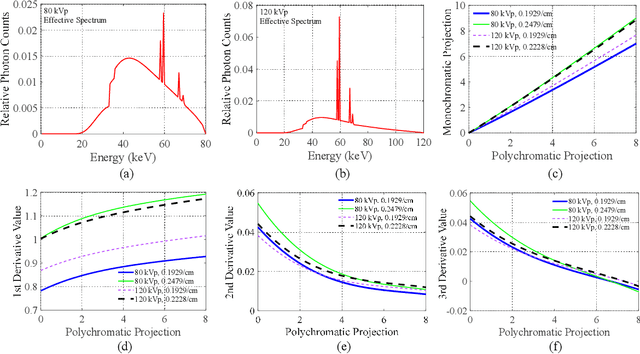

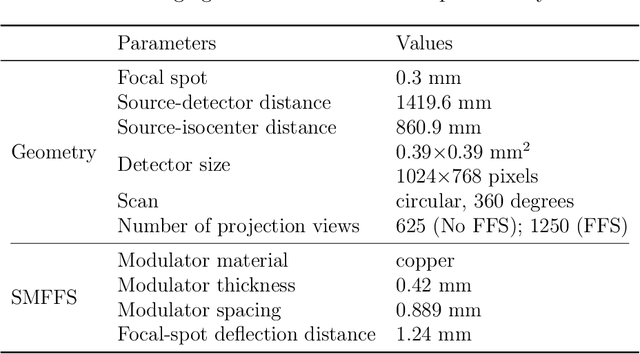
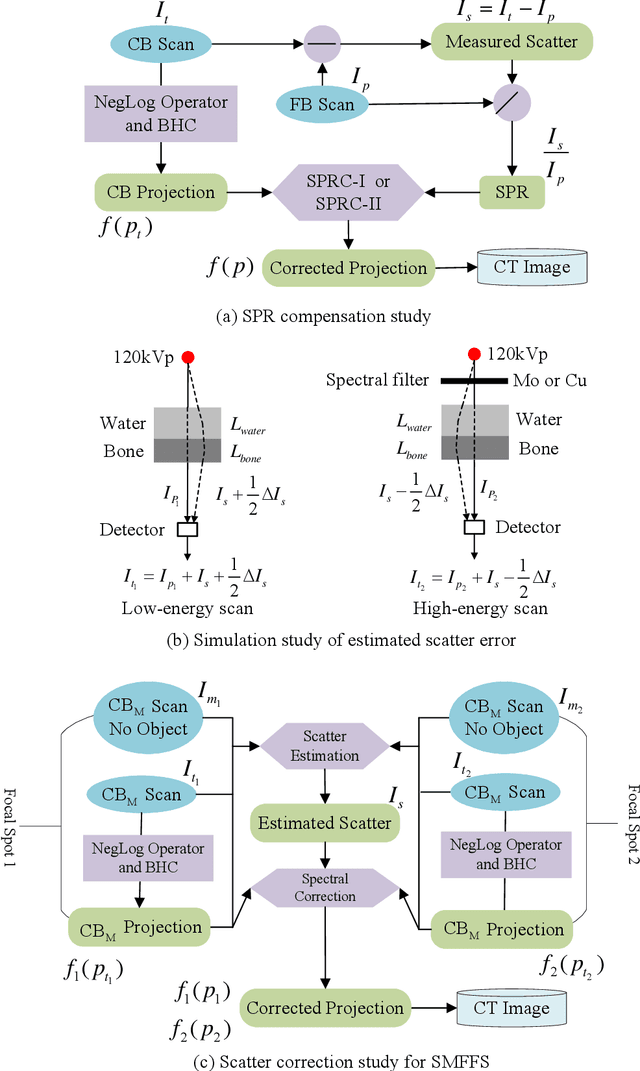
Abstract:X-ray scatter remains a major physics challenge in volumetric computed tomography (CT), whose physical and statistical behaviors have been commonly leveraged in order to eliminate its impact on CT image quality. In this work, we conduct an in-depth derivation of how the scatter distribution and scatter to primary ratio (SPR) will change during the spectral correction, leading to an interesting finding on the property of scatter: when applying the spectral correction before scatter is removed, the impact of SPR on a CT projection will be scaled by the first derivative of the mapping function; while the scatter distribution in the transmission domain will be scaled by the product of the first derivative of the mapping function and a natural exponential of the projection difference before and after the mapping. Such a characterization of scatter's behavior provides an analytic approach of compensating for the SPR as well as approximating the change of scatter distribution after spectral correction, even though both of them might be significantly distorted as the linearization mapping function in spectral correction could vary a lot from one detector pixel to another. We conduct an evaluation of SPR compensations on a Catphan phantom and an anthropomorphic chest phantom to validate the characteristics of scatter. In addition, this scatter property is also directly adopted into CT imaging using a spectral modulator with flying focal spot technology (SMFFS) as an example to demonstrate its potential in practical applications.
 Add to Chrome
Add to Chrome Add to Firefox
Add to Firefox Add to Edge
Add to Edge